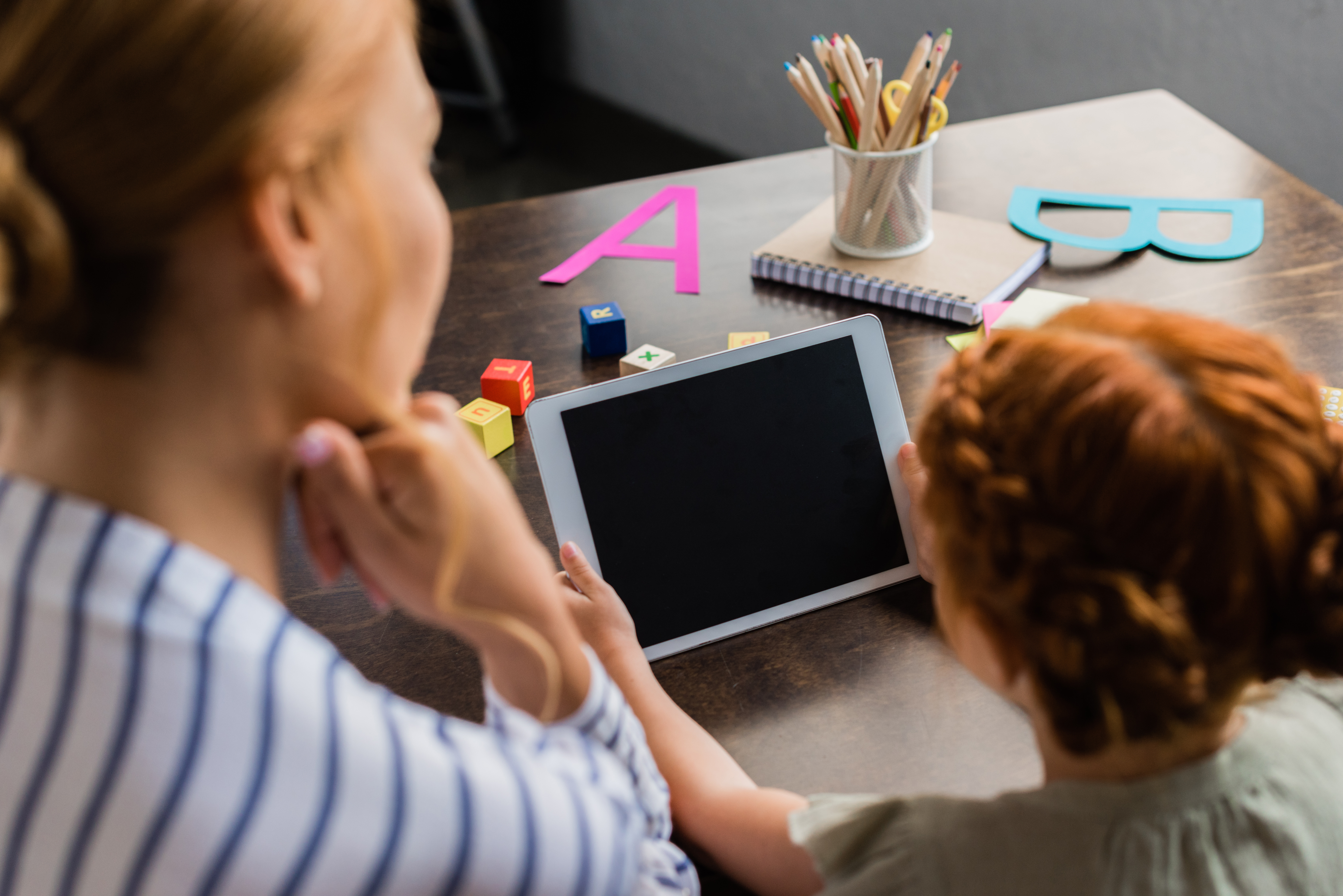You’ve taught your homeschooled child mathematics, life skills, and how to read, all without the use of an iPad. Yet, your child asks for one, and you wonder if it’s worth the price and if this device will improve or hinder learning.
iPads can be a good tool for homeschooling as long as there are clear boundaries and expectations in place. Take into consideration the pros and cons of using technology along with the needs of your children to find the best options for them.
That being said, you’re an expert on your child; what works for others may not work for your child. Various studies give educators and parents conflicting information to evaluate if technology such as an iPad can maximize learning and has a place in education. So, let’s explore some research and the pros and cons of using an iPad as a tool for homeschooling.

Research About the Use and Impact of Technology in Learning
Education World shared some summaries of research done about the effects of technology on learning. While these studies show conflicting results, they can be interesting to note.
Consider the information here through the lens of your children’s unique learning affinities to help you make an informed decision. Let’s take a look:
- Students that wrote notes by hand did better on related tests than those that typed them. The researchers hypothesized that handwriting helps the brain absorb and process better since it’s slower than typing to put it on paper.
- Laptop and tablet users performed worse in a lecture-style class than those that didn’t use technology at all, with differences showing more drastically for a class’s top students. Researchers felt this may have happened due to the students’ inability to multitask.
- Students that used their laptops for science, writing, English, and math achieved better than those that didn’t. Researchers noted that these students used their laptops for more than just typing notes.
- The use of social media to connect to virtual study groups is related to better learning outcomes than those students who studied alone. These study groups helped students be more engaged in learning and better prepared for class.
You may know or have personal experience with learners who experienced the opposite of these results. Perhaps your child has fine motor skill issues, and typing or tapping on a screen is better suited for them. Perhaps your child was bullied on social media, which can be dangerous if unmonitored and detrimental to emotional health.
Technology is everywhere and in the hands of so many. Many workforces integrate technology in their business and may require candidates for employment to have experience with technology.
Technology is considered to be part of 21st-century skills and is infused into public education and college education. Consider if your child will need to navigate technology for future educational and work goals beyond high school. Now, let’s look more closely at the pros and cons of using an iPad for learning.
Pros: iPads Are Good Tools for Homeschooling
Tablets, such as the iPad, are popular amongst public school educators in delivering digital lessons and apps to support individualized learning. Over half of children under the age of eight have been exposed to some sort of mobile device.
Parents are the foundation and starting point for their children’s education. Using technology gives the parents more resources. iPads can be considered for use to benefit your child’s homeschool education.
Parental Educator Use
Here are the benefits of iPads for parents or educators:
- The iPad can be presented on a larger screen, such as your television, to show YouTube science videos or powerpoints. Some televisions are “smart” and can wirelessly connect to your iPad. If you can’t connect wirelessly, try using an HDMI adapter and cable explicitly designed for use with your type of iPad.
- Parents can manage their children’s grades and performance using a downloaded app such as Teacher Kit. This affordable tool can also be used to track downtime minutes, allowing users the opportunity to adjust lesson planning for increased learning.
- A free and easy-to-use platform called Edmodo gives you the option to engage your child in learning through polls about the lessons you taught. This allows you to assess learning progress and access resources and apps to support and expand knowledge.
- iTunes U is an Apple product designed for educational use on the iPad. Parents can create lessons with images, video, and audio, share work with other educators, access mobile books, and stay up-to-date with educational trends and news.
- iPads can be used for documentation. You can take a photo of a hands-on project or activity that your child completed and refer back to it for reflection and evidence of learning. An iPad can also be shared with compatible Apple desktop and laptop computers.
Student Use
Here are the benefits of iPads for students:
- By utilizing and setting up apps and resources for your child’s engagement and learning, students can use information or interact with the iPad for supportive academics.
- Fewer pencils, papers, and books are needed when using an iPad. This frees up more space in the work area, leading to better organization. Organization can help keep the learning process flow smoothly without the mess that materials bring.
- Typing can be done by tapping on the screen or connecting a keyboard via Bluetooth. Another option is to use a voice-to-text feature, especially if typing or fine motor skills need support.
- iPads also offer many educational apps through their App Store that involve reading, math, science, computer coding, and more. The Kindle App is also an excellent resource for free or low-cost books. This provides many students with a new way to interact and engage with content and learning.
- iPads create portable research opportunities. They can look up information quickly and efficiently. If your iPad has a data plan or access to WiFi, work can be done on the go in the car while waiting for an appointment, and more, offering flexibility.
- iPads have longer battery life than laptops and can be easily and quickly charged with car outlet adapters and cord extensions.
- Students (and parents) can use iPads as tools for communication and self-management. iPads come with calendars, reminders, and note functions.

Cons: iPads Are NOT Good Tools for Homeschooling
The thought of having your child use an iPad might make you feel uneasy. You may wonder if it could distract or interfere with your child’s learning. Let’s look at why iPads might not work as a tool for your homeschool.
- Research on iPad use is limited to small groups or test subjects. These small-scale studies offer mixed results suggesting that the validity of the results should be questioned and remain inconclusive.
- iPads are expensive. An iPad mini is hundreds of dollars, and the full size can cost over a thousand. In addition to the purchase price, additional accessories, maintenance and apps can be costly over time. Is the cost of this going to outweigh the cost for materials you would have purchased if not using an iPad? Is the value worth the learning that could take place?
- iPads take the role of the educator away, making parents a guide rather than the leader in their child’s education.
- iPads are a cause of distraction. This is true if the device is used as a source of entertainment rather than education. Learners may also be tempted to connect to the Internet, create security issues, and access distracting and potentially harmful content, making a digital footprint that could follow them into adulthood. Multitasking between entertainment and education can hinder academic performance.
- Reading on-screen is different from reading text printed on paper. Reading on paper is continuous and linear. A learner can flip back and forth and comprehend the text more profoundly. However, on-screen reading allows skimming for quick searches of key information, potentially skipping essential comprehension. Quick reading takes away the opportunity to immerse oneself into the narrative of a story or text.
- Children should have less screen time, and iPads offer more. Increased screen time takes away from crucial face-to-face interactions, forcing users to entertain themselves with the displayed content.
- Screen time can overwhelm your brain causing attention deficits, self-control issues if tempted by content, and mental fatigue. These issues can cause more problems in adult life.
- If your iPad is only WiFi enabled, your child’s learning could be interrupted. If the Internet goes down or you historically have slow service, your child may be unable to use the device.
Conclusion
If you decide the pros outweigh the cons, having access to limitless information through an iPad comes with caution. Creating boundaries for safe iPad use is essential.
Consider the following if you determine that iPads are good for homeschooling:
- iPads are tools for learning, not non-educational apps or entertainment.
- Don’t connect the iPad to email or messaging apps.
- Turn off push notifications.
- Disable WiFi if it’s not needed.
- Limit the time spent looking at and using the iPad, and stick to it.
- Create a password and set up security that only you have access to to avoid temptations.
Sources
- The Wired Homeschool: How the iPad Can Help Parents with Homeschooling
- Loop: 4 best tablets for homeschooling your children
- Insider: How to make the most of your iPad for school
- The Deliberate Mom: Technology In Homeschooling: Is There A Place For It?
- Education World: Is Technology Good or Bad for Student Learning? Conflicting Studies Make It Hard to Tell
- Psychology Today: Five Reasons iPads Should NOT Be In Classrooms
- Psychology Today: Leadership
- Teach Hub: Advantages/ Disadvantages of the iPad Classroom
- Apple.com: Home
- App Store: Apple
- Edmodo: Home
- TeacherKit: Home
